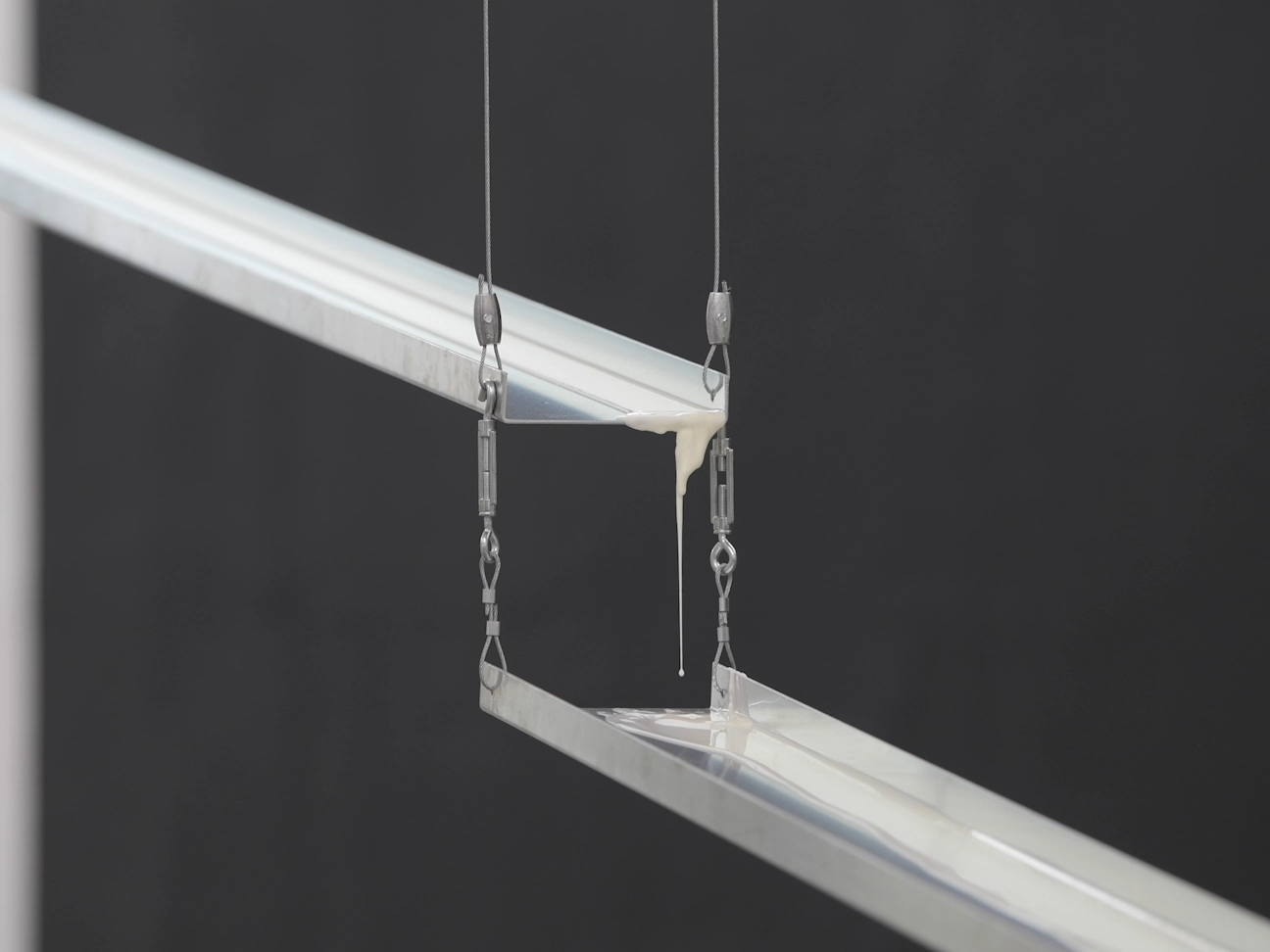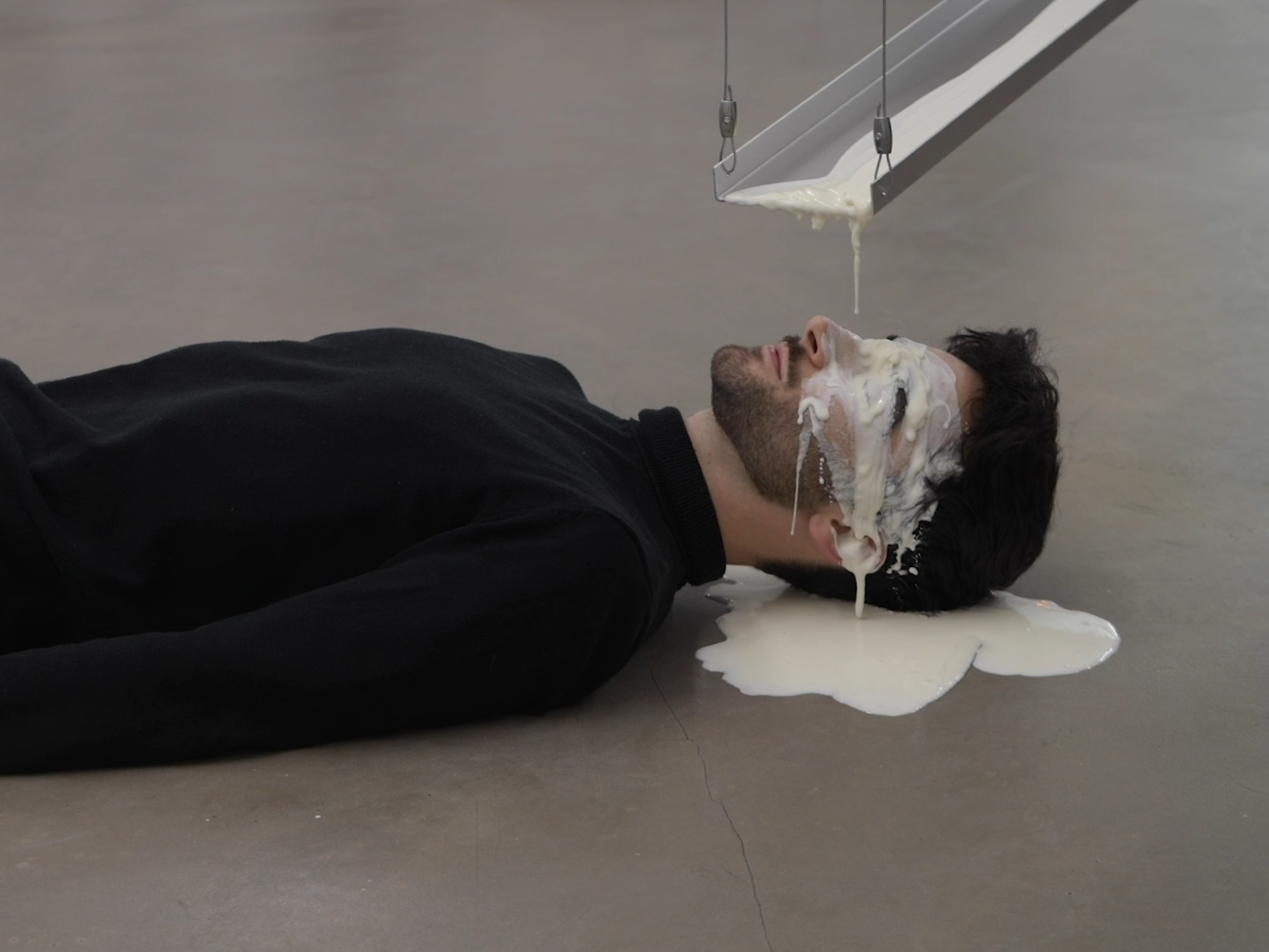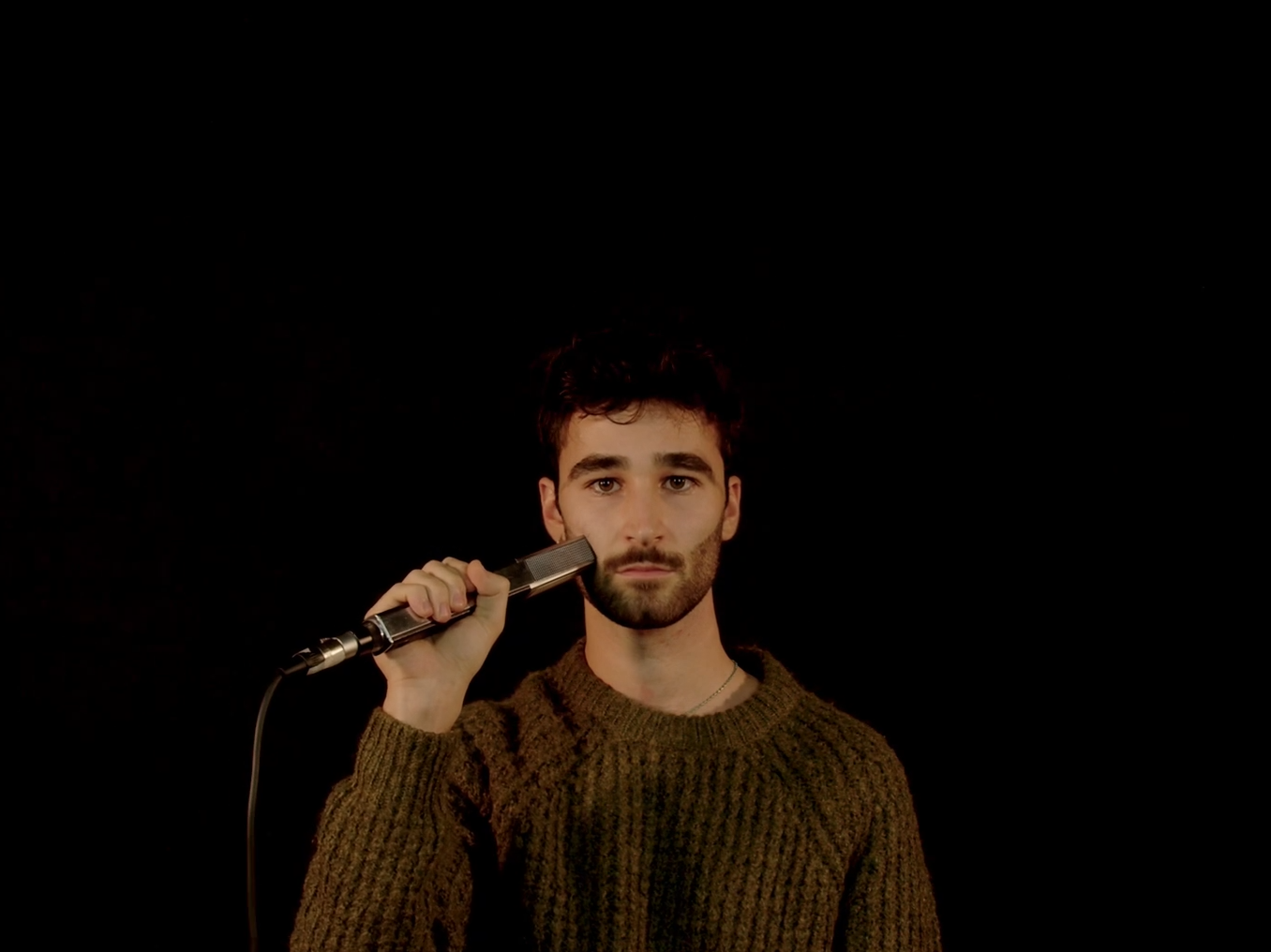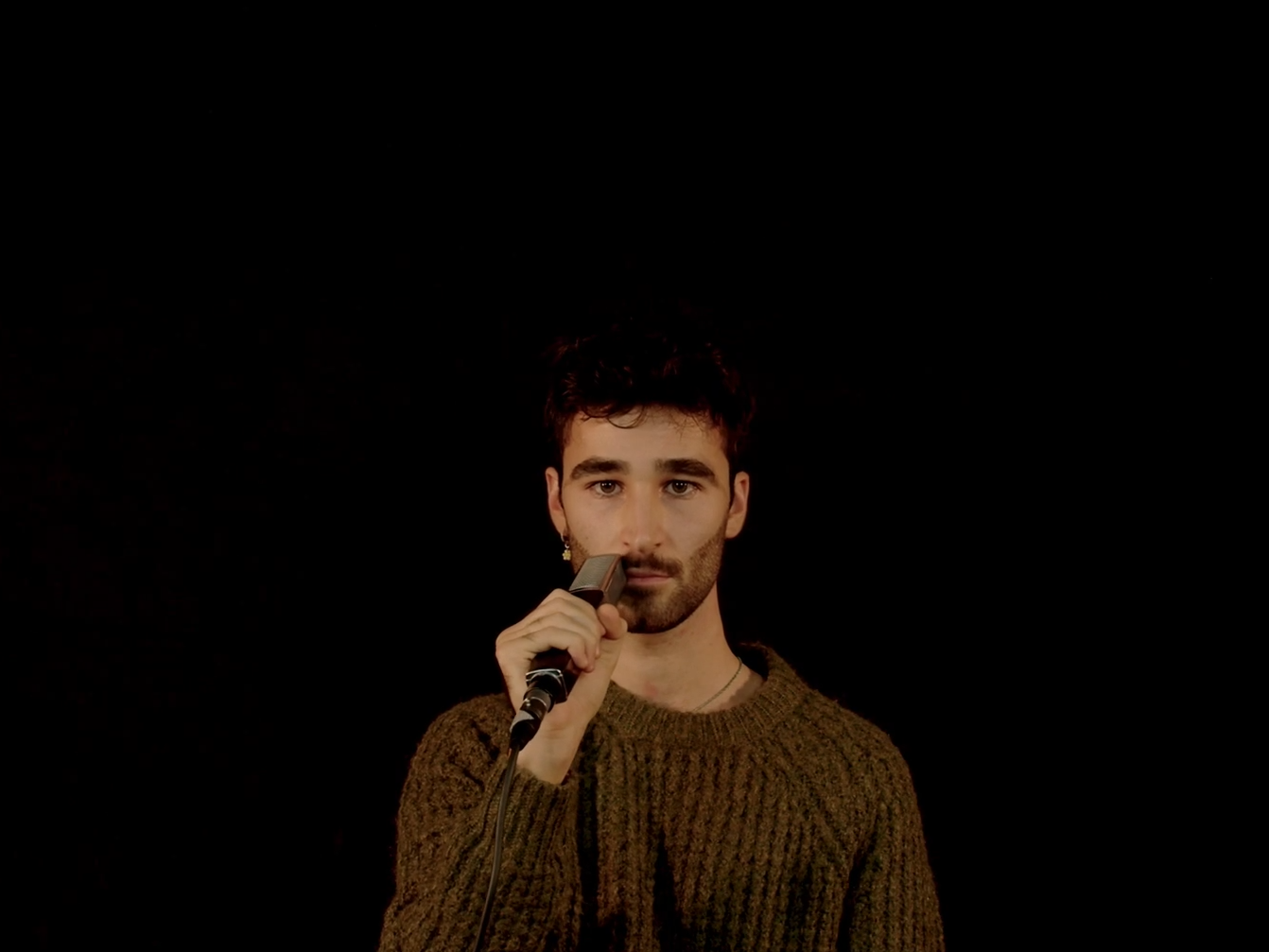
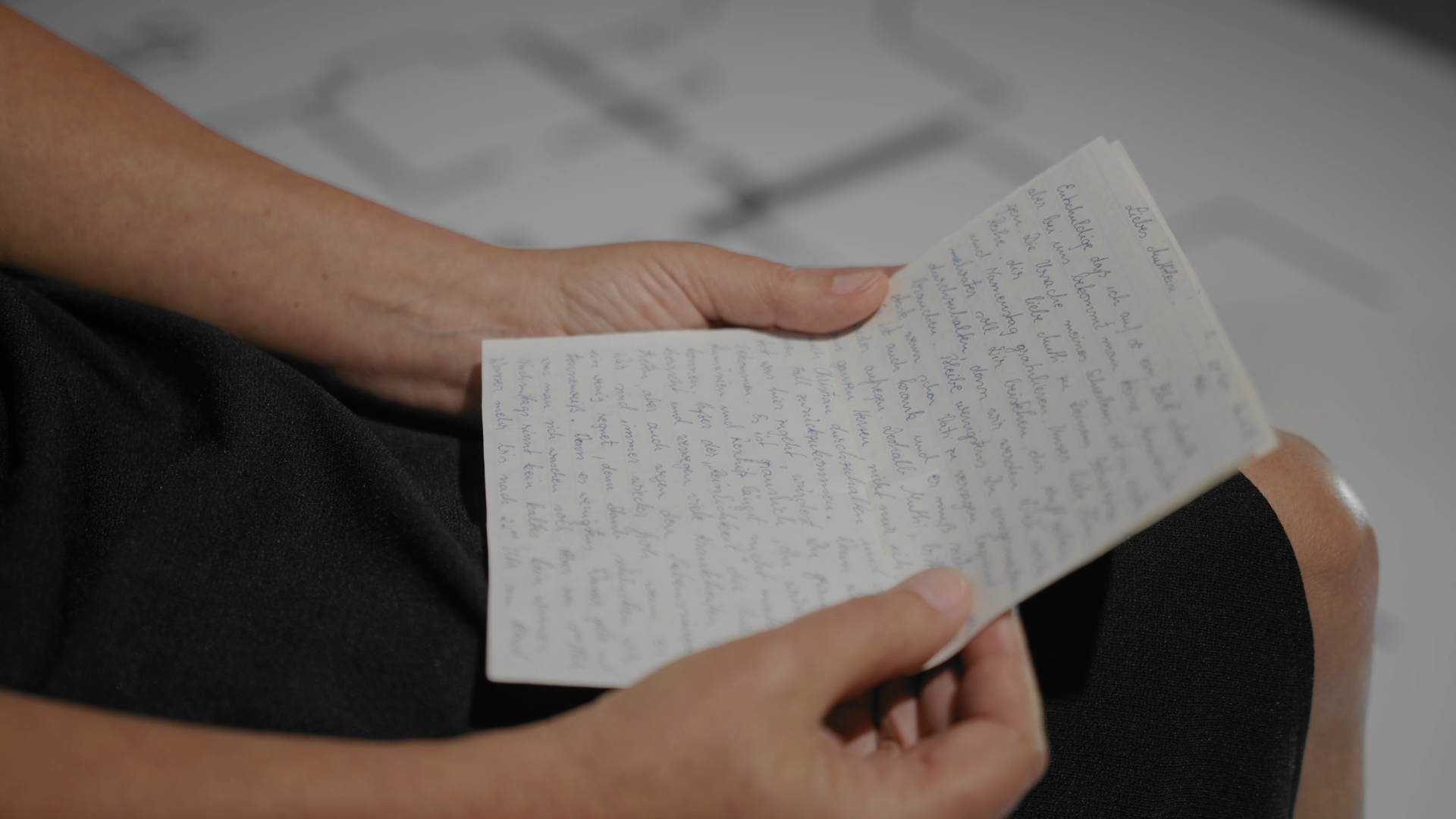
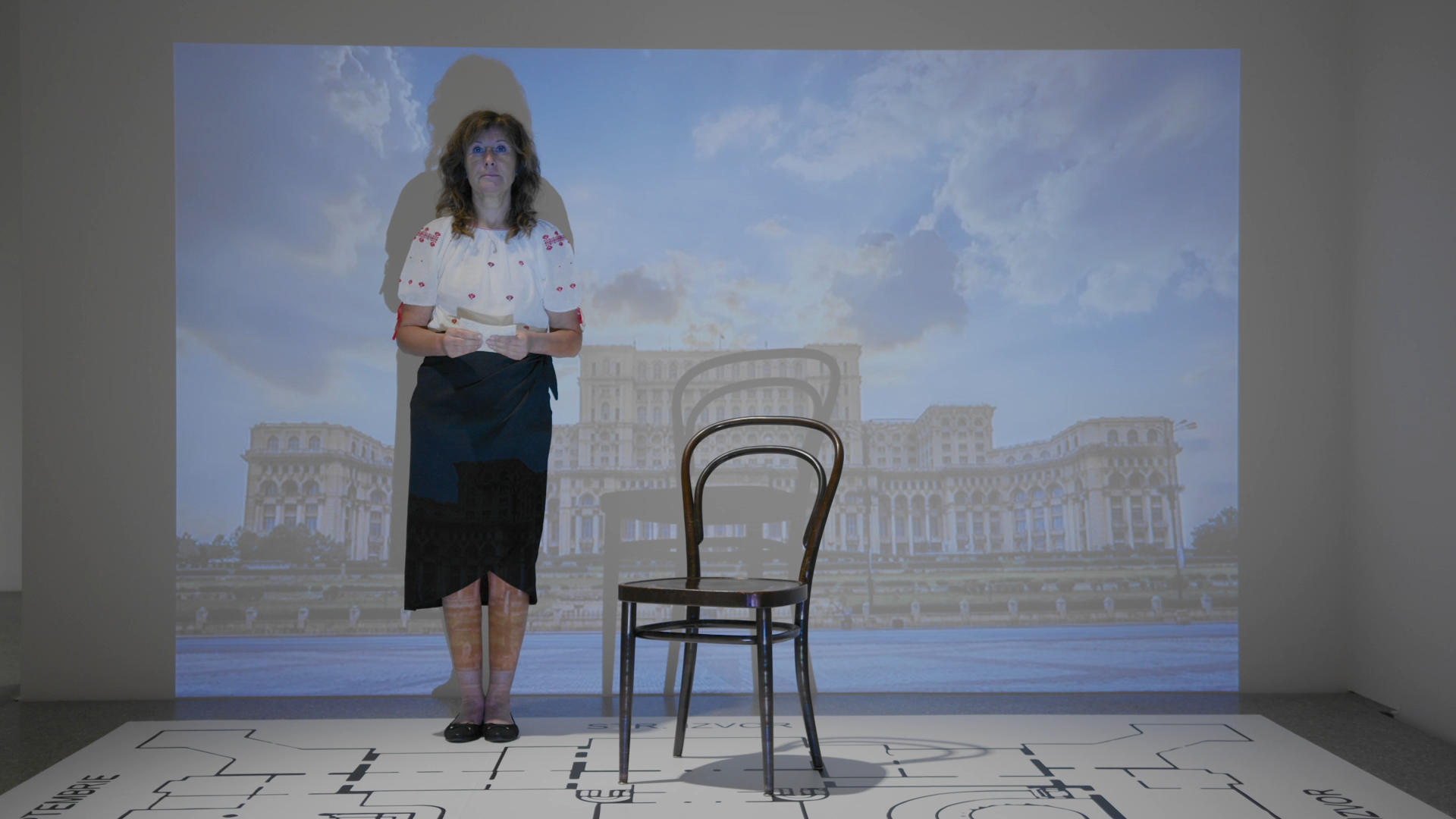
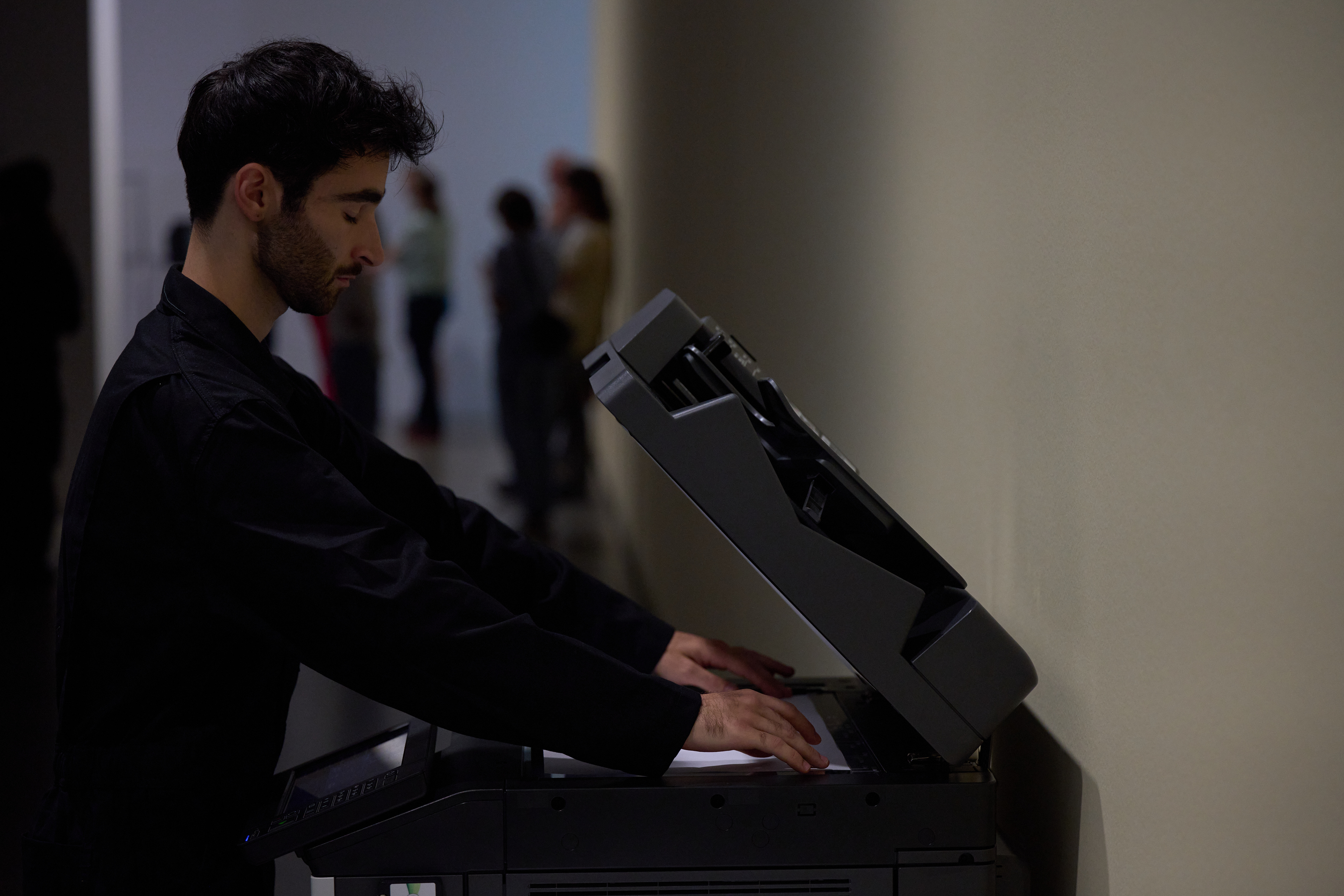

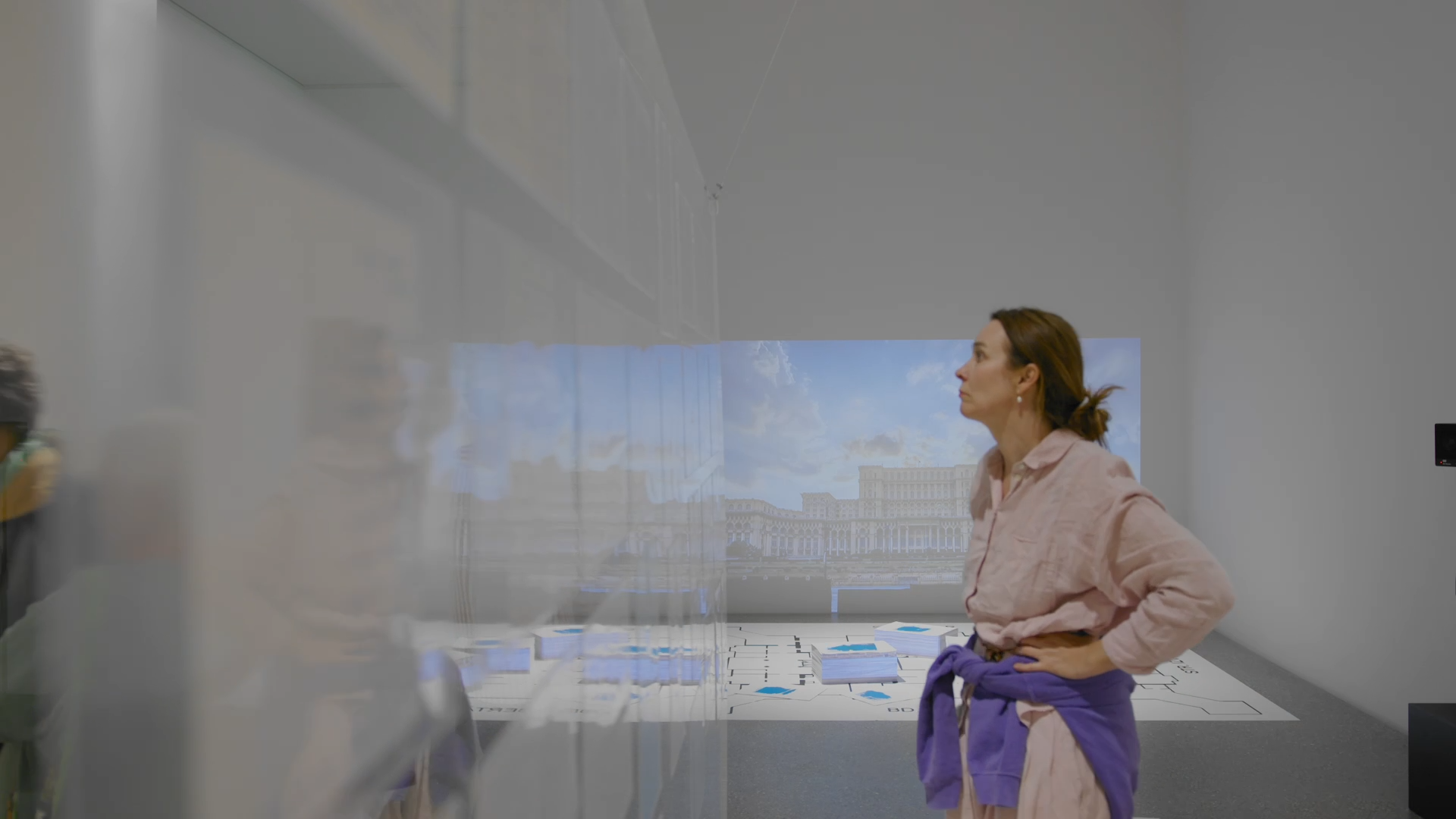
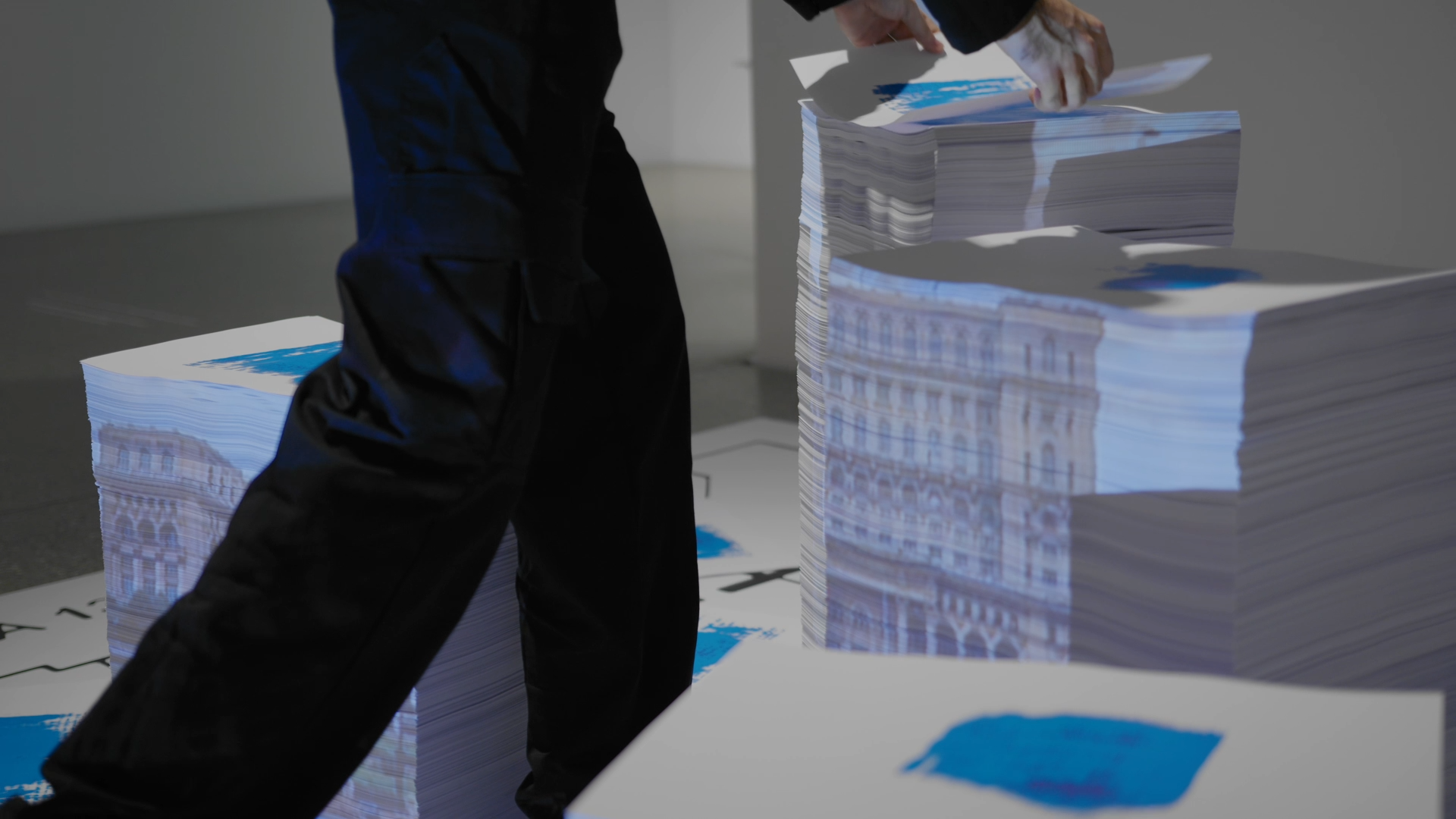
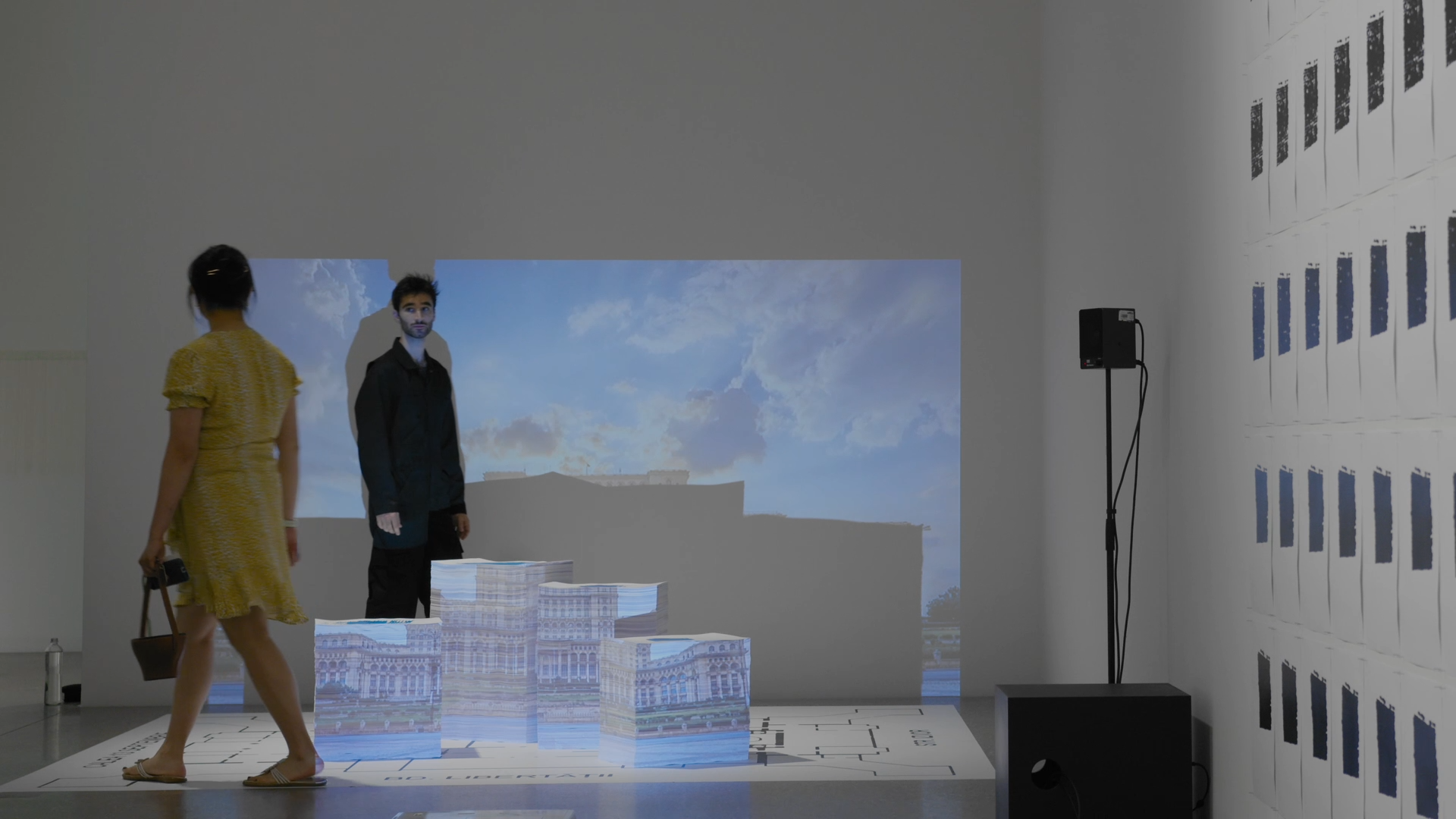
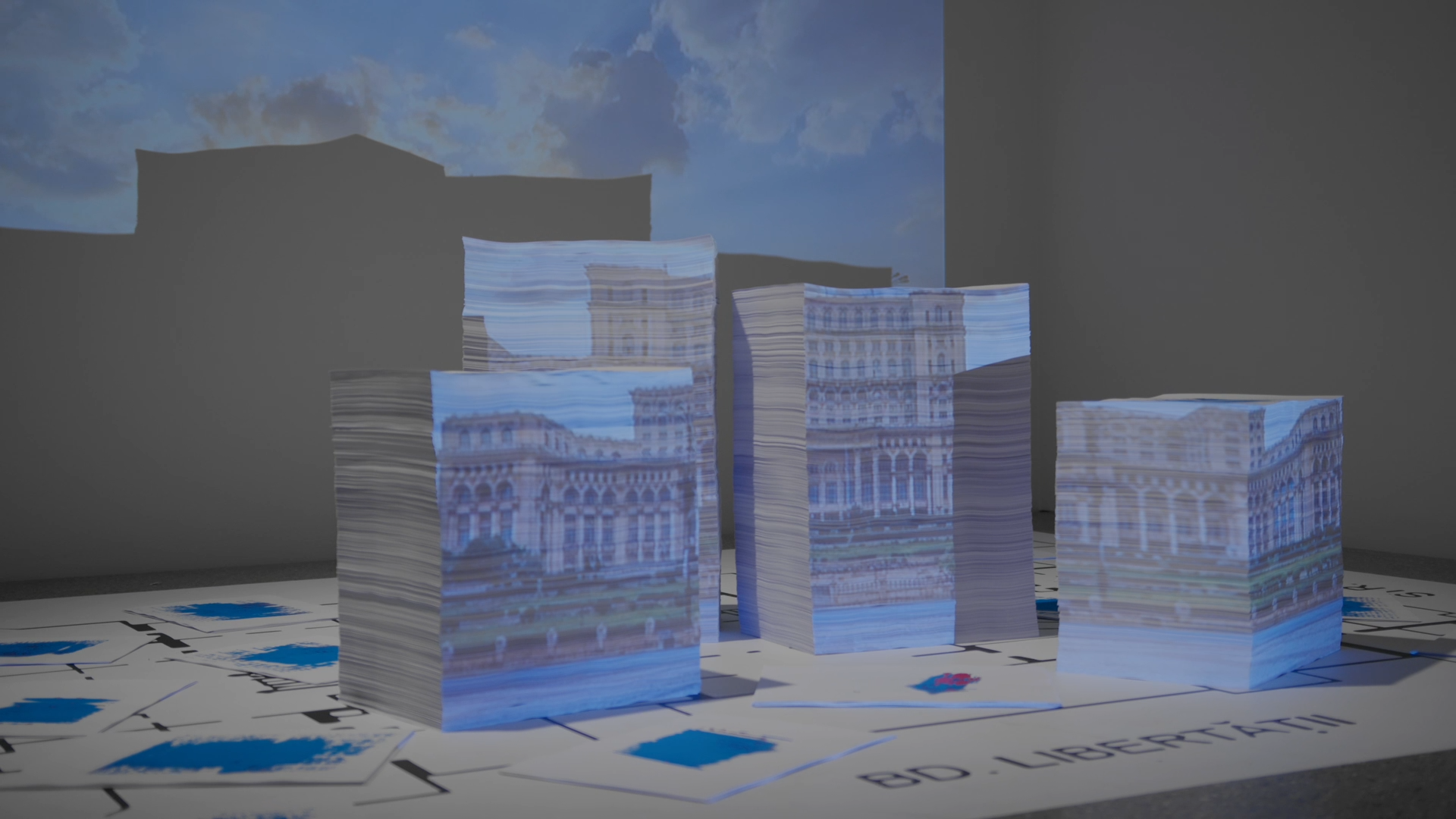


“Alo! Tovarăși! Așezați-vă liniștiți!” shouted Nicolae Ceaușescu, attempting to silence the audience of his last speech only days before being executed during the 1989 revolution. The most grotesque symbol of his repressive dictatorship dominates Bucharest to this day: the megalomaniac Casa Poporului, which was constructed while the Romanians were suffering from Ceaușescu’s economic mismanagement. My grandmother’s escape from the dire situation in Romania separated her from her family, who were not able to leave the country until years later. Today, remembering such traumatic experiences leaves them in an ambivalent state blurring factual memories and counter-memories driven by nostalgia.
Letters that my mother sent to my grandmother during the time of their separation serve as a testimony to the reasons for my family’s escape from their home country. The recursive action of photocopying this testimony and piling it up to cover and defragmentate visual representations of the Casa Poporului reflects upon how these blurred memories and nostalgia can constitute an act of reclamation in post-migration contexts.
